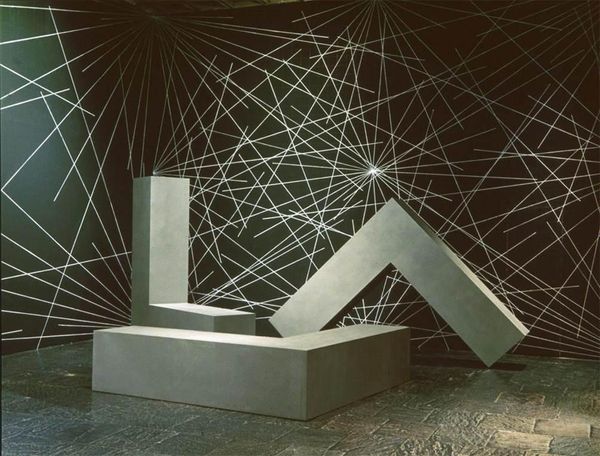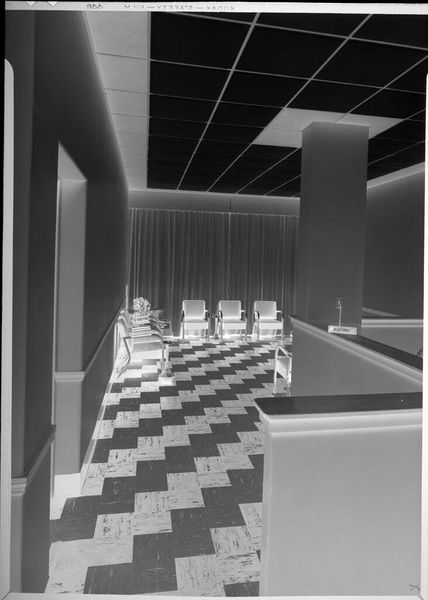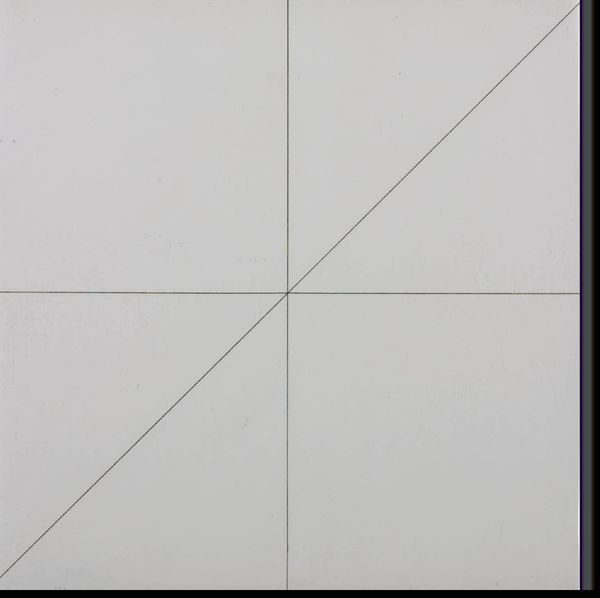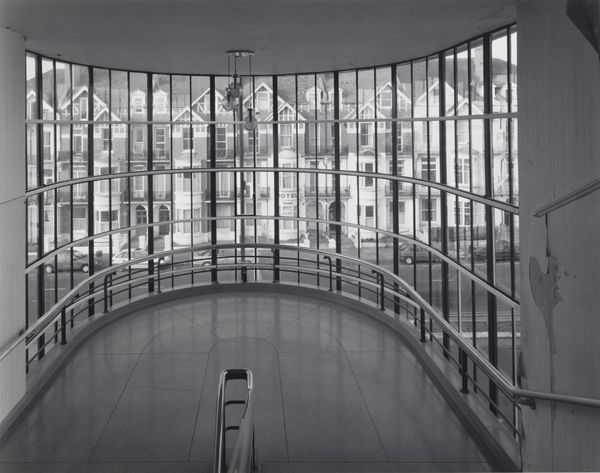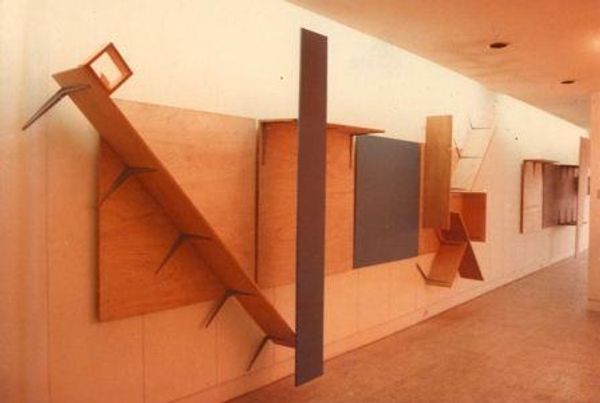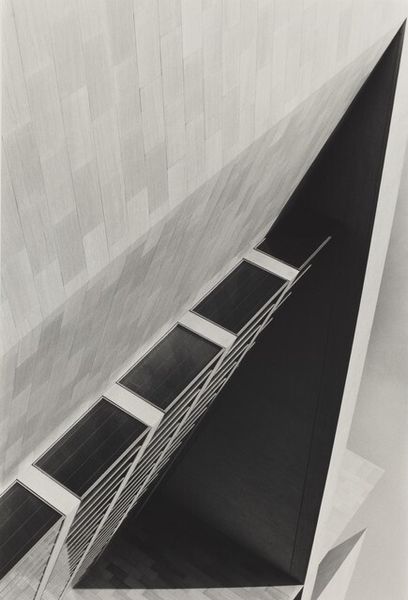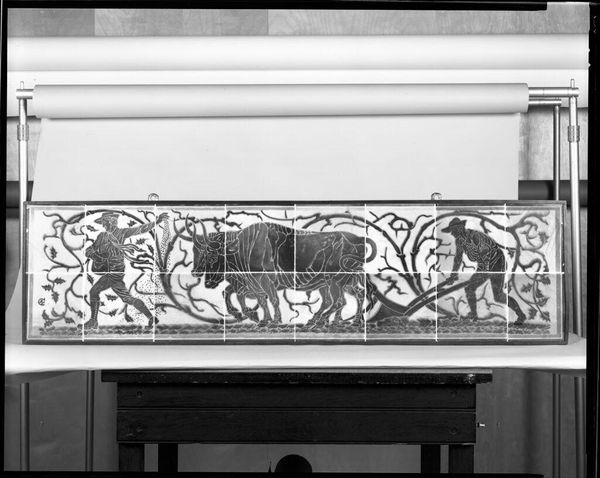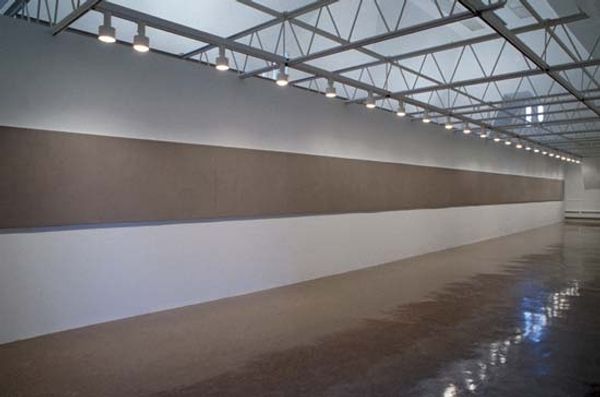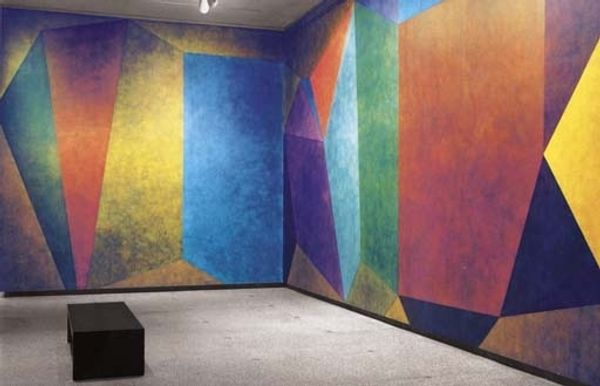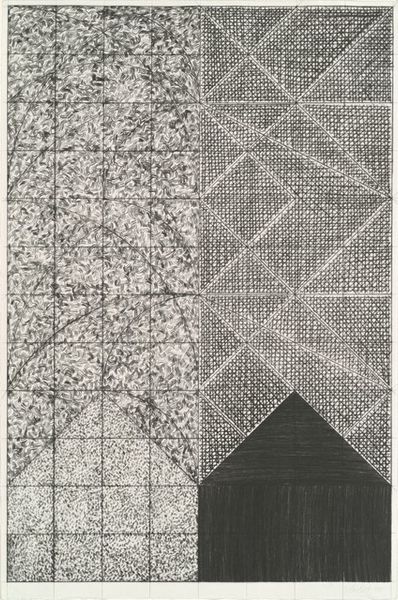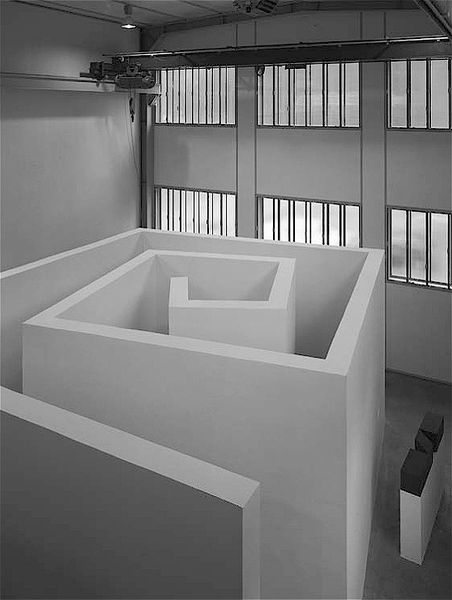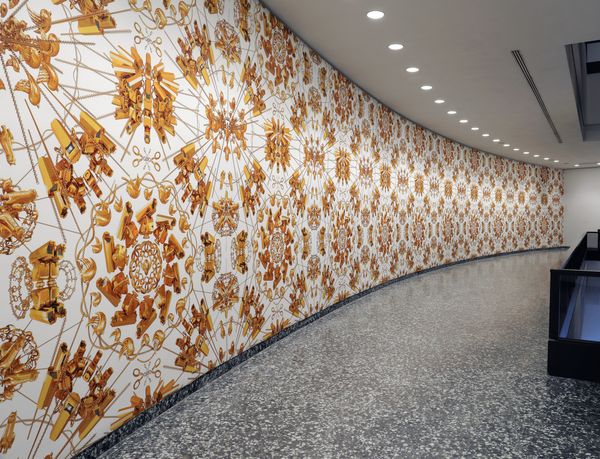
drawing, sculpture, graphite
#
drawing
#
conceptual-art
#
minimalism
#
sculpture
#
sculpture
#
geometric-abstraction
#
abstraction
#
line
#
graphite
#
monochrome
Copyright: Sol LeWitt,Fair Use
Editor: This is Sol LeWitt's "Wall Drawing #260" from 1975. It appears to be made from graphite on a dark wall, with various geometric and curved lines filling the space. It's quite striking, almost like a massive chalkboard filled with diagrams. How should we approach interpreting a work like this? Curator: Look closely at the graphite. Its application isn't about individual expression but about execution of a set of instructions. The labor becomes the artwork itself. The social context of conceptual art valued the idea over the object, thus de-emphasizing the traditional role of the artist as a skilled hand. It brings into question what really matters. Do you agree? Editor: So, the instructions themselves, the *concept*, are more crucial than the finished appearance? Does that challenge the very definition of art? Curator: Exactly! And consider the materials. Graphite is simple, readily available, and associated with drafting and everyday mark-making. Its demotic quality challenges the art world's reverence for precious materials. Are we consuming art, or the idea of it? Also think, who actually executed this work? Is it really LeWitt's? Editor: Right, I read that his wall drawings were often executed by others, following his directions. So, labor is decoupled from artistic creation, and yet, without labor, there is no visible manifestation. I’m beginning to see how it redefines traditional artistic roles and highlights the value of production itself, of a team effort that can bring these instructions to life. Curator: Precisely. The lines might appear simple, even childlike, but they result from a complex system of instructions, and that raises questions around consumption and commodification, wouldn't you say? Editor: I see your point! It really reframes how we appreciate art by directing us towards the material conditions and the broader social context in which it was created. Thank you. Curator: My pleasure. And always remember to look for those tensions between idea and material.
Comments
No comments
Be the first to comment and join the conversation on the ultimate creative platform.
